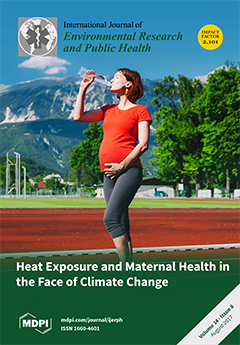Int. J. Environ. Res. Public Health, Volume 14, Issue 8 (August 2017) – 118 articles
“Expecting mothers are an important group whose unique vulnerability to heat stress should be factored into public health policy,” says the study's lead author, Sabrina McCormick, PhD, an Associate Professor of Environmental and Occupational Health at Milken Institute School of Public Health at the George Washington University. Leeann Kuehn, a recent GW MPH alumna, is the publication's first author. The cover image is from Bigstock (Photo credit: Natalia Deriabina, Bigstock Photo). View the paper
- Issues are regarded as officially published after their release is announced to the table of contents alert mailing list.
- You may sign up for e-mail alerts to receive table of contents of newly released issues.
- PDF is the official format for papers published in both, html and pdf forms. To view the papers in pdf format, click on the "PDF Full-text" link, and use the free Adobe Reader to open them.





